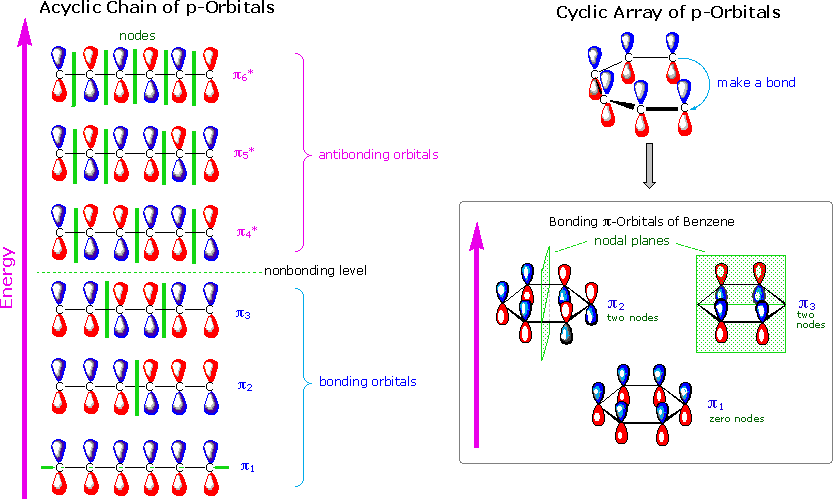
- #Two types of nodes occur in atomic orbitals plus
- #Two types of nodes occur in atomic orbitals series
Two alternative sets of d orbitals have all five d orbitals of equivalent shape corresponding to rectangular orbital graphs oriented to exhibit five-fold symmetry One set of these equivalent d orbitals is based on an oblate (compressed) pentagonal antiprism, whereas the other set of equivalent d orbitals is based on a prolate (elongated) pentagonal prism ( Figure 1).

This set of d orbitals is not the only possible set of d orbitals. The exponent of the variable z corresponds to l-m, i.e., 2-m for this set of d orbitals. The orbital graphs for four of this set of five d orbitals are squares, whereas that for the fifth d orbital is a linear configuration with three vertices and two edges. Table 1 shows the orbital graphs for the commonly used set of five d orbitals as well as the corresponding orbital polynomials. The unlabeled vertices of the orbital graphs are considered negative.
#Two types of nodes occur in atomic orbitals plus
For clarity in the orbital graphs depicted in this paper, only the positive vertices are labeled with plus (+) signs. Orbital graphs are necessarily bipartite graphs in which each vertex is labeled with the sign of the corresponding lobe and only vertices of opposite sign can be connected by an edge. Such an orbital graph has vertices corresponding to its lobes of the atomic orbital and the edges to nodes between adjacent lobes of opposite sign. In this connection, a convenient way of depicting the shapes of atomic orbitals with two or more nodes is by the use of an orbital graph. For higher nodality atomic orbitals with l > 1 nodes the situation is more complicated since there is more than one way of choosing an orthogonal 2 l + 1 set of orbitals. Thus, an s orbital, with the quantum number l = 0, is simply a sphere equivalent in all directions (isotropic), whereas the three p orbitals, with quantum number l = 1, are oriented along the three axes with a node in the perpendicular plane.

The single s and three p atomic orbitals have simple shapes.

This has prompted me to revisit such issues, adding the new feature of f orbital involvement as might be expected to occur in structures of actinide complexes and relating hybridization schemes to the polynomials of the participating orbitals. Such studies included an investigation of distortions from ideal symmetries in relatively symmetrical systems with molecular orbital degeneracies In the ensuing quarter century, interest in actinide chemistry has generated an increasing interest in the involvement of f orbitals in coordination chemistry.
#Two types of nodes occur in atomic orbitals series
In a series of papers in the 1990s, the author focused on the most favorable coordination polyhedra for sp 3d n hybrids, such as those found in transition metal complexes.


 0 kommentar(er)
0 kommentar(er)
